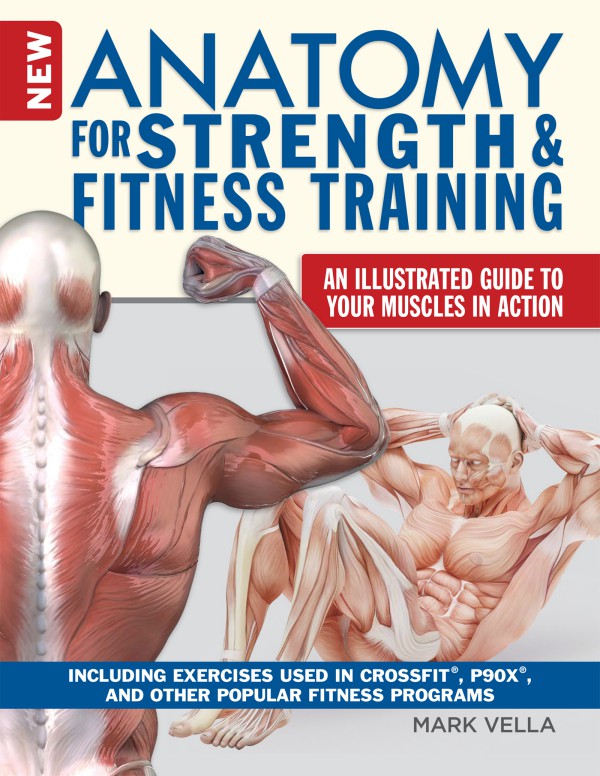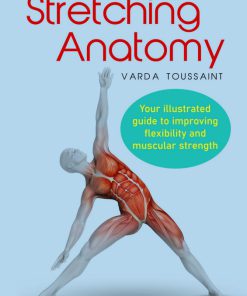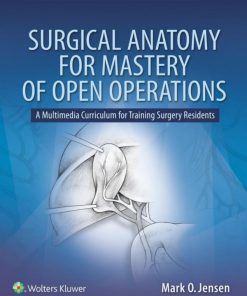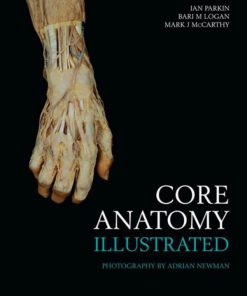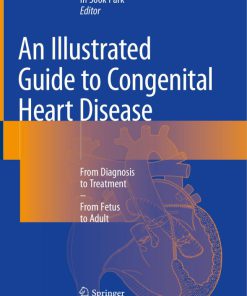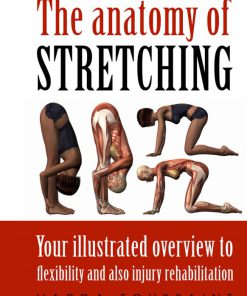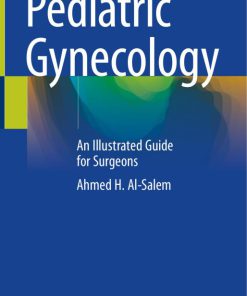Anatomy for Strength and Fitness Training An Illustrated Guide to Your Muscles in Action 1st Edition by Mark Vella ISBN 1504800516 9781504800518
$50.00 Original price was: $50.00.$25.00Current price is: $25.00.
Authors:Mark Vella , Series:Anatomy [177] , Tags:Health & Fitness › Exercise › General , Author sort:Vella, Mark , Ids:9781504800518 , Languages:Languages:eng , Published:Published:Dec 2018 , Publisher:IMM Lifestyle Books , Comments:Comments:Perfect for beginning and advanced fitness practitioners alike, this is an in-depth look into the most magnificent machine ever created–the human body. Using detailed anatomical illustrations, New Anatomy for Strength and Fitness Training provides you visual insight into what happens to this organic machine during exercise–muscles and tendons working in concert to strengthen your body’s building blocks. With a basic knowledge of how the body works, you can buff up your body with more than 75 selected exercises, grouped by body region and involving gym machines, free weights, and body weight/stretching, as well as yoga and Pilates. Each exercise is vividly illustrated by a full-color anatomical illustration of the targeted muscles, together with instructions on execution and technique.
Anatomy for Strength and Fitness Training An Illustrated Guide to Your Muscles in Action 1st Edition by Mark Vella – Ebook PDF Instant Download/Delivery. 1504800516, 9781504800518
Full download Anatomy for Strength and Fitness Training An Illustrated Guide to Your Muscles in Action 1st Edition after payment
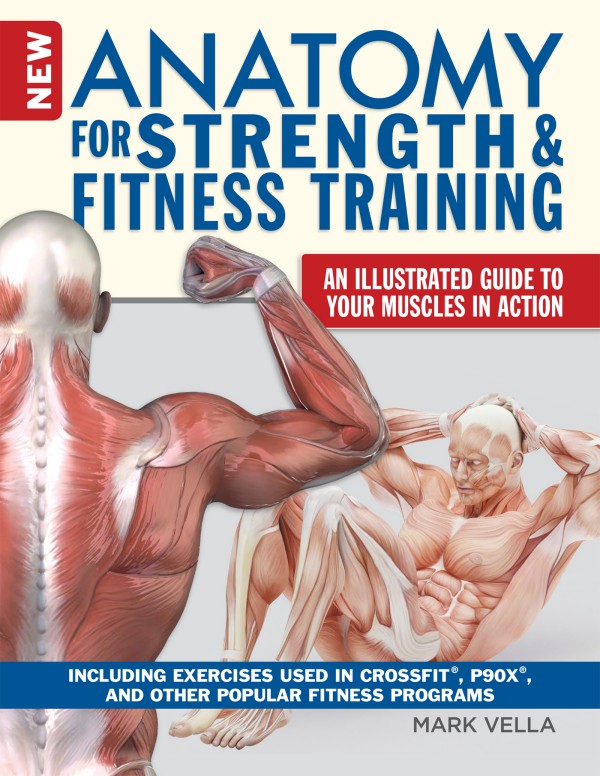
Product details:
ISBN 10: 1504800516
ISBN 13: 9781504800518
Author: Mark Vella
Get an in-depth look into the most magnificent machine ever created—the human body!
- Over 100 anatomical illustrations of 70 muscles in action, detailed and in full color
- Over 75 exercises to increase your flexibility and strength
- Expert instructions for exercises for strength training and gym fitness, stretching and flexibility training, yoga, Pilates, and bodybuilding
- Learn how each exercise works and understand how it shapes the body, with the science of movement, training concepts, and fitness principles
- Perfect for beginners and advanced fitness practitioners alike, this is the must-have exercise reference for fitness enthusiasts
Using detailed anatomical illustrations, New Anatomy for Strength and Fitness Training provides you with visual insight into what happens to the human organic machine during exercise—muscles and tendons working in concert to strengthen your body’s building blocks.
With this basic knowledge of how the body works, you can buff up your body with the book’s 75+ exercises, grouped by body region and involving gym machines, free weights, and body weight/stretching, as well as yoga and Pilates. Included are comparisons of contemporary training options from CrossFit and P90X to Zumba, SoulCycle, TRX, Orangetheory, and more.
Each exercise is vividly illustrated by a full-color anatomical illustration of the targeted muscles, together with instructions on execution and technique. By understanding how your body responds to each movement, you’ll be able to isolate specific muscle groups and design the most targeted program possible.
Motivate yourself and make your workouts more powerful and effective by seeing how your muscles actually work when you exercise with safe and proper form!
“New Anatomy for Strength and Fitness Training is clearly written and designed with highly instructive illustrations. A powerful resource for novice and advanced fitness enthusiasts alike, this book is the Bible of strength and fitness training. It is empowering, and should be in every home and commercial gym.”
—Allan Richter, Editor, Discover Life and Energy Times magazines
Anatomy for Strength and Fitness Training An Illustrated Guide to Your Muscles in Action 1st Table of contents:
Part 1: Fundamentals of Anatomy for Strength Training
-
Introduction to Muscle Anatomy
- Overview of Muscle Types: Skeletal, Smooth, and Cardiac
- Structure and Function of Muscle Fibers
- Muscle Contraction: The Sliding Filament Theory
- The Role of Tendons and Ligaments in Movement
-
The Skeletal System and Joint Structure
- Bone Structure and Types
- Major Joints in the Body
- Joint Movements: Flexion, Extension, Abduction, and Adduction
- Role of Cartilage and Ligaments in Movement
-
Muscle Activation and Energy Systems
- How Muscles Work Together During Exercise
- The Role of Motor Units and Muscle Fibers
- Energy Systems: ATP, Anaerobic, and Aerobic Systems
- Understanding Fatigue and Recovery
Part 2: Upper Body Anatomy and Movements
4. The Shoulder and Upper Arm
- Anatomy of the Shoulder Joint
- Muscles Involved in Upper Body Movements
- Key Exercises: Shoulder Press, Chest Press, and Pull-Ups
- Illustrated Muscle Activation During Exercises
-
The Forearm, Wrist, and Hand
- Muscle Anatomy of the Forearm
- Flexion, Extension, and Grip Strength
- Exercises Targeting Forearm and Hand Muscles
- Common Injuries and Prevention
-
The Back and Trapezius Muscles
- Anatomy of the Back: Spine, Latissimus Dorsi, and Trapezius
- Key Exercises: Deadlifts, Rows, and Pull-Ups
- Understanding Posture and Alignment
- Illustrated Muscle Activation During Back Exercises
-
The Biceps and Triceps
- Anatomy of the Upper Arm Flexors and Extensors
- Key Exercises: Bicep Curls, Tricep Extensions, Dips
- Muscle Function in Arm Movements
- Illustrated Techniques for Strengthening Arm Muscles
Part 3: Core and Trunk Musculature
8. The Core: Abdominals and Obliques
- Muscles of the Abdominal Region
- The Role of the Core in Stability and Movement
- Key Exercises: Planks, Crunches, Russian Twists
- Illustrated Core Activation During Training
- The Lower Back: Erector Spinae and Gluteals
- Anatomy of the Lower Back and Glutes
- Role of the Erector Spinae in Posture and Extension
- Key Exercises: Deadlifts, Hyperextensions, Squats
- Strengthening the Glutes for Functional Movement
Part 4: Lower Body Anatomy and Movements
10. The Hip and Quadriceps
– Anatomy of the Hip Joint and Quadriceps
– Key Exercises: Squats, Lunges, Leg Press
– Muscle Activation and Proper Form
– Preventing Injuries in Lower Body Training
-
Hamstrings and Glutes
- Anatomy of the Hamstrings and Gluteal Muscles
- Key Exercises: Deadlifts, Romanian Deadlifts, Glute Bridges
- Strengthening Posterior Chain Muscles
- Muscle Activation and Function in Lower Body Movements
-
The Calves and Lower Leg
- Anatomy of the Calf Muscles: Gastrocnemius and Soleus
- Key Exercises: Calf Raises, Box Jumps, Sprints
- Preventing Strains and Improving Mobility
Part 5: Practical Application in Strength and Fitness Training
13. Movement Patterns and Functional Training
– Understanding Fundamental Movement Patterns: Push, Pull, Squat, Hinge
– The Role of Functional Training in Strength Building
– Integrating Anatomy with Movement to Maximize Performance
-
Program Design and Progression
- How to Design a Strength Training Program
- The Principle of Progressive Overload
- Customizing Programs for Different Fitness Goals: Strength, Hypertrophy, Endurance
- Importance of Recovery and Rest
-
Injury Prevention and Rehabilitation
- Common Injuries in Strength Training
- Strategies for Injury Prevention: Warm-up, Mobility, Stretching
- Recovery Techniques: Foam Rolling, Active Rest, Ice and Heat Therapy
- Rehabilitation for Muscular Injuries
Part 6: Advanced Topics in Strength and Fitness Training
16. Biomechanics and Performance Optimization
– Understanding Biomechanics in Strength Training
– Lever Systems, Force, and Motion
– Analyzing Common Exercises from a Biomechanical Perspective
– Enhancing Performance with Proper Form and Technique
-
The Role of Nutrition in Muscle Development
- Macronutrients and Their Role in Muscle Growth
- Importance of Protein, Carbohydrates, and Fats
- Supplementation for Strength and Recovery
-
Psychology of Strength Training
- Motivation and Mental Toughness in Strength Training
- Setting Goals and Tracking Progress
- The Role of Visualization and Focus in Performance
People also search for Anatomy for Strength and Fitness Training An Illustrated Guide to Your Muscles in Action 1st:
anatomy for strength and fitness training
new anatomy for strength and fitness training
anatomy for strength and fitness training pdf
anatomy for strength and fitness training for women
anatomy for strength and fitness training for women pdf
You may also like…
eBook PDF
BUSINESS TRAINING MANUAL A practical guide for training micro entrepreneurs 1st edition by Emil Tin

